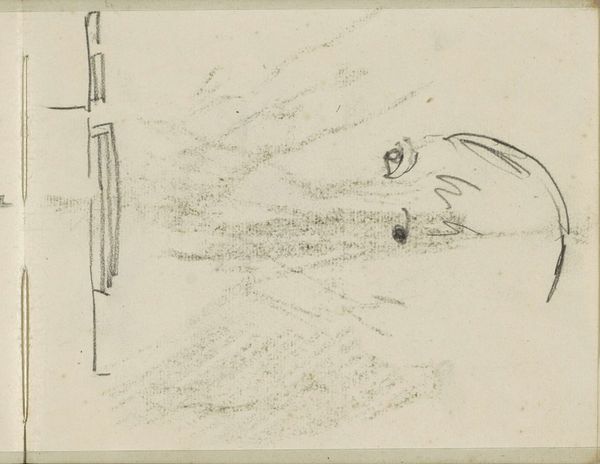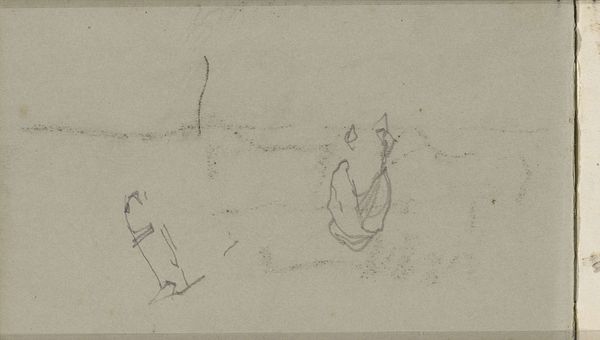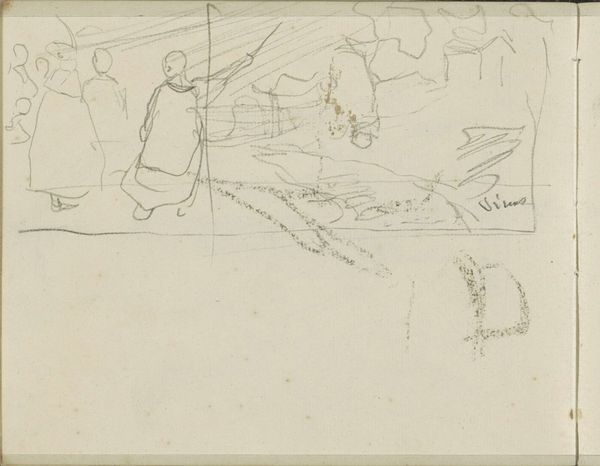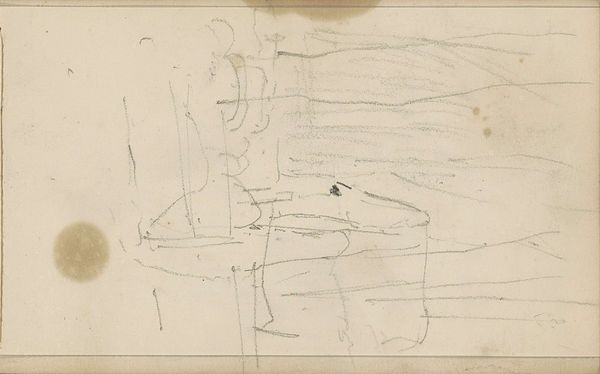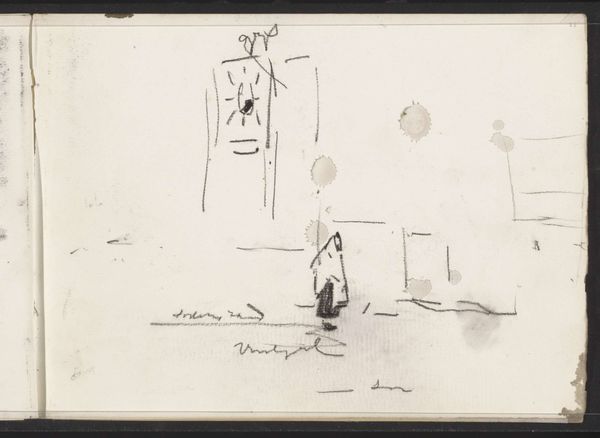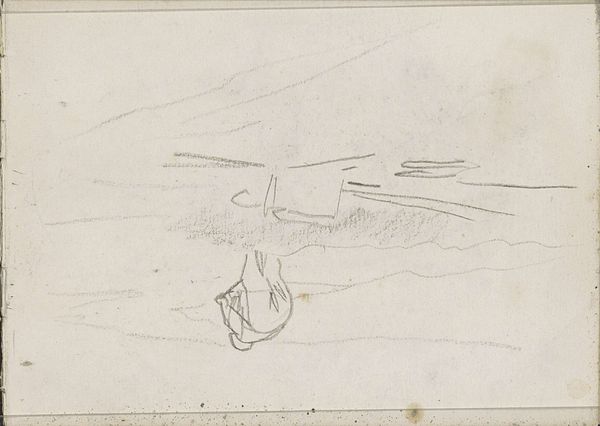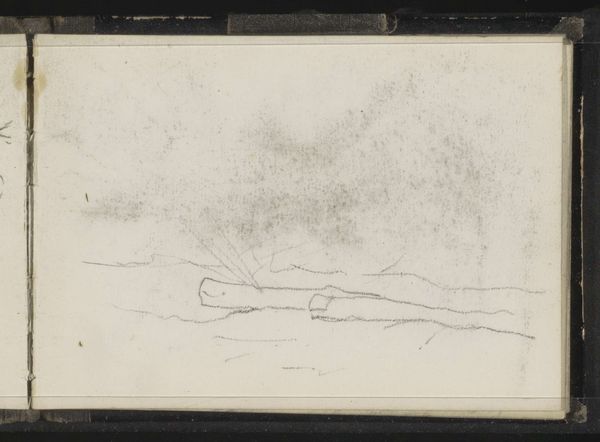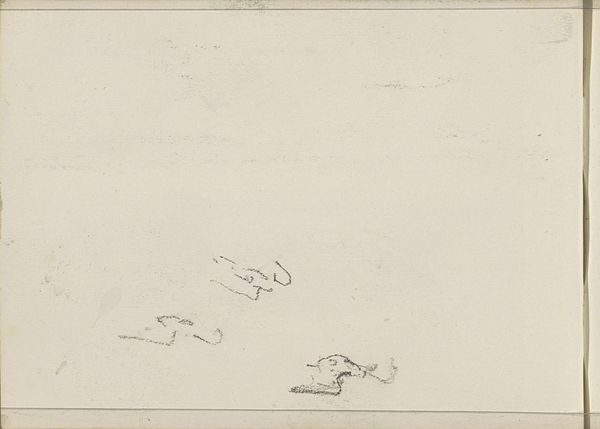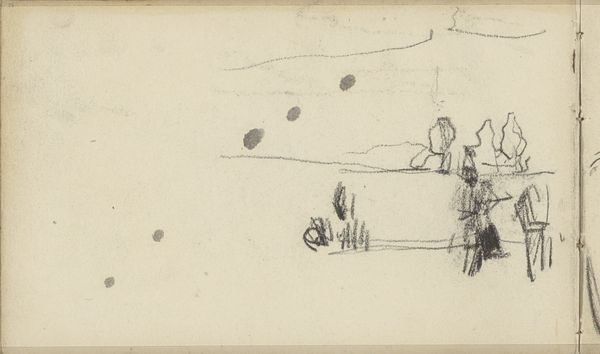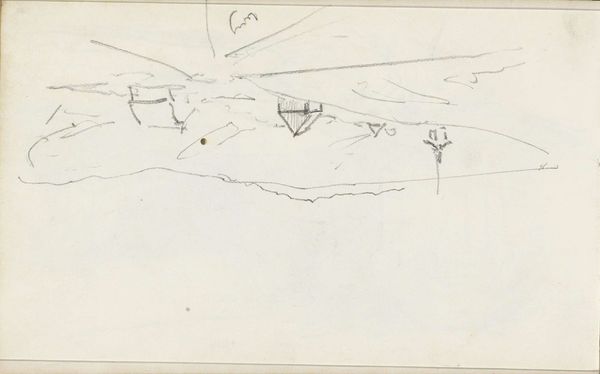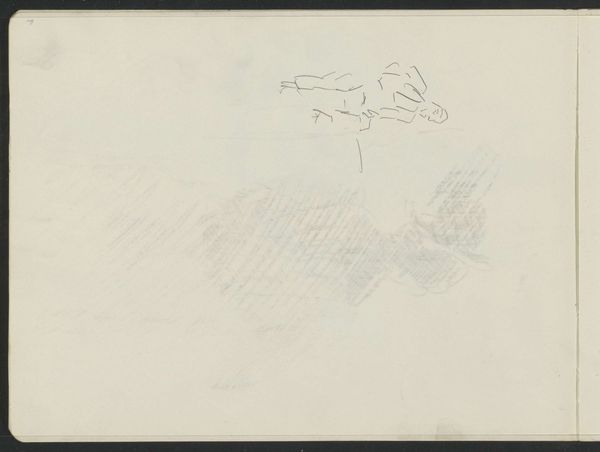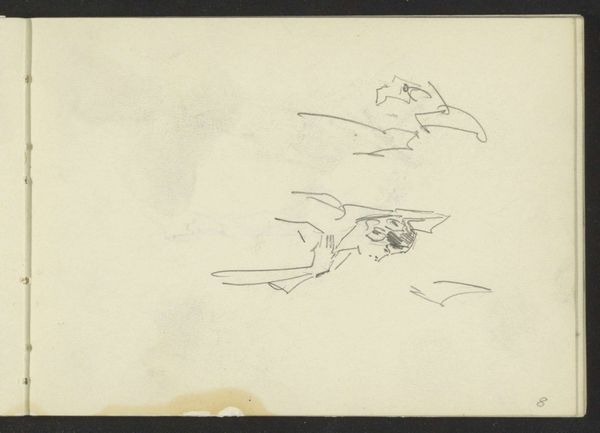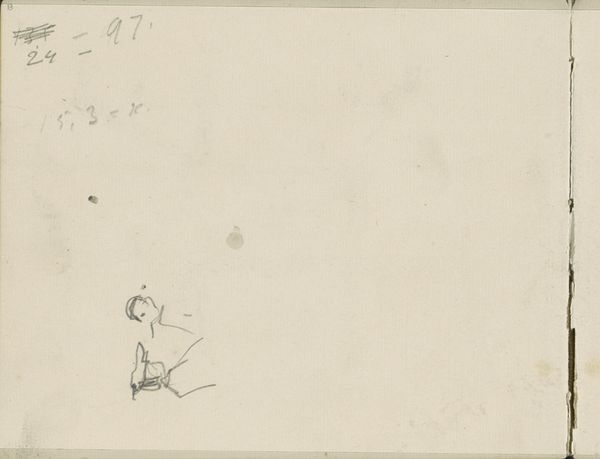
drawing, paper, pencil
#
drawing
#
landscape
#
paper
#
pencil
Copyright: Rijks Museum: Open Domain
Curator: A quick sketch of what seems to be the bleakest, most God-forsaken place imaginable. Editor: Here we have a drawing titled "Russian cross of the church at Malye Karmakuly, Nova Zembla" by Louis Apol, created around 1880. It’s rendered in pencil on paper and currently held at the Rijksmuseum. Curator: It looks more like an abandoned doodle found in the back of a forgotten sketchbook. What are we even looking at? Editor: If we deconstruct it formally, the composition employs stark minimalism. There's a central motif, the Russian Orthodox cross, anchoring the composition on the left. Note its unusual three-bar design, with the lower bar often interpreted to symbolize the footrest of Christ and the repentance of the thief. Curator: You see a carefully constructed composition. I see a drawing capturing the feeling of emptiness. The kind of place where hope goes to die, you know? Those faint lines, like ghosts of the church in the background… it just echoes loneliness. Editor: Indeed, that stark rendering contributes profoundly. Apol was known for his atmospheric landscapes. The strategic use of negative space amplifies the isolation, a near absence punctuated only by the faint cross and the more enigmatic shape on the right, perhaps another monument in decay. Curator: That shape on the right bugs me. Is that…a hand? An oddly angled bell? It’s as if the landscape itself is broken, disjointed. And what about all of those stains on the paper? It might be his spilt coffee. Maybe the landscape itself had coffee spilled on it and nothing grows ever again. It adds to the gloomy poetry! Editor: While the paper stains undeniably contribute to the artwork’s weathered character, focusing primarily on intrinsic design is essential to formal analysis, without dismissing possible contexts. Apol had to have endured severe climate to document this isolated location. This stark contrast invites further thought regarding human resilience, as it is framed on such minimal means. Curator: Maybe we should all strive for that level of endurance and isolation to achieve ultimate clarity, artistically and spiritually, maybe? Thanks, Louis. Editor: Certainly, it offers a poignant reflection on faith, survival, and artistic intent. The austerity of Apol’s drawing is a captivating look on what humans make even in remote surroundings.
Comments
No comments
Be the first to comment and join the conversation on the ultimate creative platform.
